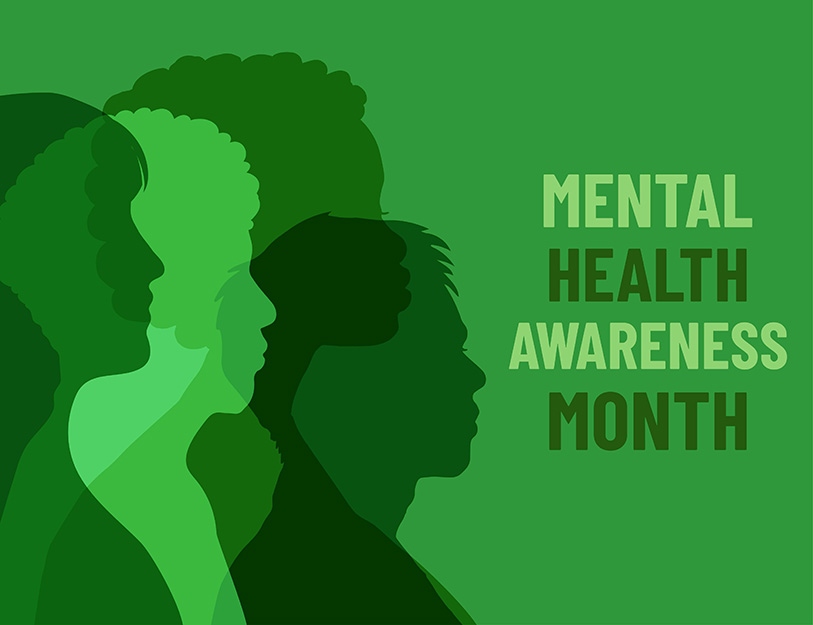In this episode of The Workplace podcast, CalChamber employment law expert Matthew Roberts speaks with clinical social worker Amanda Gibson about mental health in the workplace, including how employers can detect mental distress in workers and what to do to help.
Businesses today are grappling with a lot of challenges, from the economic to the operational, such as supply chain issues, increased costs and regulations, as well as either labor shortages or too much labor in the workforce. But one factor that can significantly impact a company’s success or failure is the mental well-being of its employees, Roberts says in kicking off the podcast.
Opening Up About Mental Health
A recent survey, Roberts says, indicated that there’s a significant generational gap among employees who experience mental distress in the workplace. The research shows that millennials and Gen Z workers have a harder time with mental health compared to Baby Boomers and Generation X.
Gibson, who has worked for more than 15 years in clinical and leadership roles, points out that we all need to realize that we have just gone through a collective traumatizing event caused by the COVID-19 pandemic.
It’s time, she says, to reflect on what we experienced in the last three years.
“In my anecdotal experience, what I’m hearing when I do organizational wellness workshops, as well as with my clients, is that there’s some unresolved trauma within workplaces and how the pandemic was managed by leadership, and a lot of grief and loss with turnover with the Great Resignation and people losing coworkers that they really cared for,” Gibson says.
Additionally, she says that one factor that may contribute to the generational gaps reported in the study on employee mental health, may be that millennial and Gen Z workers were socialized as children to talk about their feelings and have more emotional intelligence and awareness than older workers.
Signs of Distress
Mental health issues in the workplace can lead to absenteeism, low productivity and even turnover. Since not all workers are comfortable opening up about their mental health needs, what kinds of behaviors should employers look out for, Roberts asks Gibson?
Gibson replies that there still is a lot of stigma surrounding mental health, so it’s important that workplaces normalize talking about mental health and remind employees how to access mental health benefits, including informing them on the differences between the Employee Assistance Program (EAP) versus health insurance versus private pay.
Additionally, there are trainings offered from Mental Health America organizations and the Counseling Collaborative, where one can go in and have workshops and normalize discussing well-being, wellness and mental health in the workplace, she says.
A behavior pattern that employers can look for are workers who are highly reactive.
“If we see someone’s reactivity to a stressor that’s really heightened and intense, and maybe a little different than what you’re used to seeing, that could be an indication they’re struggling,” she says.
Other signs include obvious muscle tension in the person — an employee is talking about having poor sleep (poor sleep can be an indication of depression or anxiety) or chronic illnesses.
Another factor that may contribute to mental distress is burnout.
Signs of burnout, Gibson says, include exhaustion, depletion and a lack of connection to the work being performed.
“You’ll hear people say, even if they’ve been achieving things and are productive, that they’re not really feeling that they are. They’re not as connected, they will perceive their productivity as lower,” she says. “And that distance from their meaning and purpose at their job can really be a big indication of burnout.”
Work-Life Harmony Is Key
Helping employees achieve work-life harmony is important to fostering wellness in the workplace, Gibson says. This means more autonomy over the work employees perform, schedule flexibility and access to paid leave.
Moreover, boundaries between when work starts and stops, and one’s personal life starts and stops is key.
“Lack of boundaries will well lead to burnout, resentment, those kinds of things,” she says.
Universal Human Needs
One resource Gibson highly recommends is the Surgeon General’s Framework for Mental Health & Well-Being in the Workplace.
This framework, she says, talks about universal human needs, and what workplaces can do to provide those. For example, the framework talks about how workplaces can be great places to cultivate trusting relationships, and foster collaboration and teamwork. Because we often spend more time at work than at home, it’s important to create moments where people can connect.
“I want to really have these moments that I really miss from before, like the water cooler, the lunches, the walks, the jokes, the inside jokes, just the connection between the people you work with,” she said.
CalChamber members can read more in HRCalifornia Extra’s Small but Meaningful Steps Can Increase Employee Mental Health, Well-Being. Not a member? Learn how to power your business with a CalChamber membership.







